My continued quest to build the best cEDH deck has led me to Rograkh, Son of Rohgahh—Thrasios, Triton Hero, which I currently believe is my best deck. Today, I’d like to introduce it.
This is not a Polymorph deck—it’s a creature combo deck.
Why Thrasios?
I’ve been impressed by Thrasios in general. On first read, four mana seems like a lot to invest for a card in cEDH. When I first read Thrasios, I thought the main advantage was just having a Commander that cost two mana, offered two colors (one of which was Blue), and had Partner. But it plays so much better than that.
The biggest advantage of Thrasios is it turns infinite colorless mana into an easy win. There are a lot of two-card combos that generate infinite colorless mana, but if your Commander doesn’t offer a mana sink, you need a third piece, which makes the combo very clunky. If you have Thrasios in the Command Zone, it’s extremely easy to play redundant two-card combos that win the game, which is the focus of this deck.
Another advantage of Thrasios is when you aren’t infinite, there are a lot of single cards that make the ability go from bad to good: Training Grounds, Biomancer’s Familiar, and Seedborn Muse. With any one of those, Thrasios becomes a serious threat, and additional pieces stack rather than being redundant, to make Thrasios quickly dominate a game.
The final advantage of Thrasios is how time is generally on your side—the longer the game goes, the more Thrasios builds a mana and card advantage. This means Thrasios plays well against any stax pieces that slow the game down unless they stop you from activating Thrasios. Even if they make several of your cards bad, you can invest your mana in Thrasios while you wait for an answer.
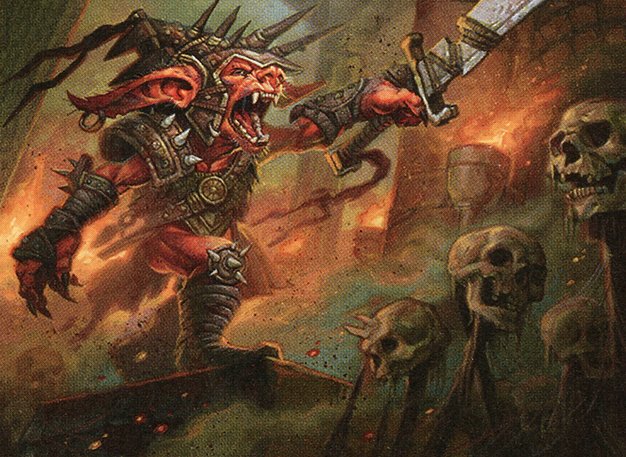
Rograkh, Son of Rohgahh, by Chris Seaman
Why Rograkh?
So why is Rograkh the best partner for Thrasios?
Thrasios already gives you card advantage and a strong late game, so partners like Tymna the Weaver or Tevesh Szat, Doom of Fools are redundant.
Redundancy isn’t strictly bad—having redundancy is good since both lead to the same game plan, but my goal is to build a deck that can play well in any gear at any stage of the game. If I’m the only Blue player in a pod, I want to be able to capitalize on my opponent’s lack of counters by going fast, because I won’t be able to stop several turbo decks myself. If the pod slows down, I want to be able to play that game, too. My goal isn’t to find a deck that wins 30% of the time, my goal is to break 50% and higher than that, and that means being able to compete on any terms.
Rograkh fundamentally offers mana, and mana lets me go faster. It also pairs particularly well with Thrasios, the most mana-hungry partner.
Red is a shallow color in cEDH—there aren’t many generally good Red cards, but the best Red cards are fantastic. Blue and Green are both deep. I’ve found the tools available in Temur to be very well-rounded.
So what am I doing with Rograkh and how does it make mana?
I’m playing the following cards:
- Springleaf Drum
- Paradise Mantle
- Moonsnare Prototype
- Jaspera Sentinel
- Guild Artisan
- Relic of Legends
- Mox Amber
Jaspera Sentinel may look a little weird. Surely there are plenty of other better mana elves available, but in a world of Orcish Bowmasters, I value the second toughness very highly. With Rograkh, it doesn’t really have much of a drawback unless I draw multiple of those cards, and when that happens, my draw is usually great because I have a lot of fast mana. Thrasios can help out as another cheap creature I’m happy to tap.
On a related note, having two cheap Commanders makes Guild Artisan and Relic of Legends both incredible.
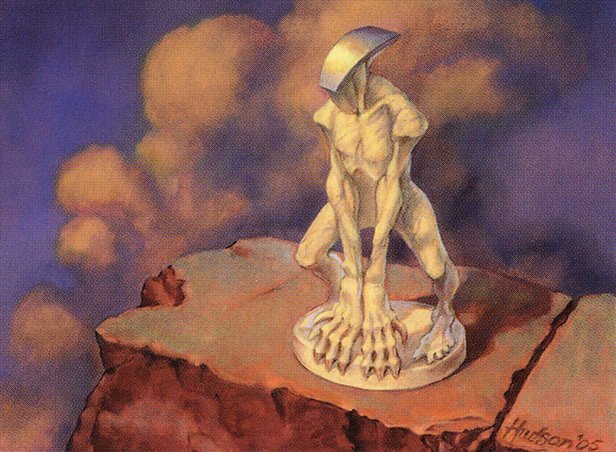
Cloudstone Curio by Heather Hudson
How to Win
I wasn’t planning to start with a random portion of my mana base, but it’s important to explain what Rograkh offers the deck. With that out of the way, let’s get to a more natural starting point, which is, of course, how I’m ending the game. Always start with how you win and work your way backward.
My goal is to make infinite mana and let Thrasios take the wheel. To accomplish that, I have the following combos:
Dockside Extortionist with Cloudstone Curio: Here’s another place where Rograkh shines. Because I have a creature that costs 0 to loop with Cloudstone, I only require three total enchantments and artifacts under my opponent’s control for a Dockside/Curio loop to net mana.
Dockside Extortionist with Barrin, Master Wizard or Temur Sabertooth: Here I need Dockside to make five Treasures per cast with Sabertooth and six with Barrin, which isn’t a given (while three usually is), but happens more often than not.
Kinnan, Bonder Prodigy with Basalt Monolith: Kinnan makes Monolith tap for four, then you untap for three and repeat.
Machine God’s Effigy with Devoted Druid: Machine God’s Effigy copies Devoted Druid, then you have a non-creature artifact that you can put meaningless -1/-1 counters on to untap and taps for Blue or Green mana with haste because it isn’t a creature.
Eternal Witness with Snap and Gaea’s Cradle: This requires five creatures in play, so Cradle taps for five green and another land taps for blue, Snap targets Witness, Witness targets Snap, and the loop costs five and nets six mana.
None of these combos require that I have a creature in play when I start my turn, so it’s easy to find an unexpected win when the opportunity presents itself. All of them are relatively easy to disrupt—a removal spell can stop any of them, but the redundancy and the fact that they each use different cards mean I can get stopped or lose access to a particular card and still find another win later.
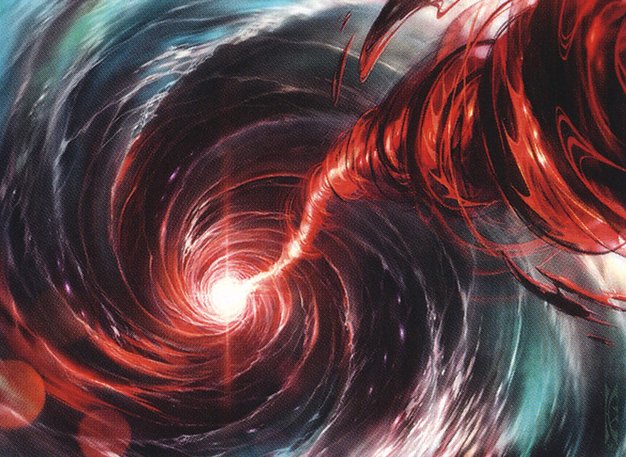
Mana Drain by Raymond Swanland
The fact that my wins are easy to disrupt means I want a lot of ways to back them up. This means a lot of counterspells, which I wanted anyway to avoid losing. Thrasios plays really well with countermagic since you can hold up mana to cast instants or activate Thrasios, and Thrasios makes up any card disadvantage as long as you can keep the game going.
I play the following cards that interact with the stack:
- Fierce Guardianship
- Force of Negation
- Force of Will
- Mental Misstep
- An Offer You Can’t Refuse
- Dispel
- Flusterstorm
- Pyroblast
- Red Elemental Blast
- Swan Song
- Veil of Summer
- Mana Drain
- Muddle the Mixture
- Deflecting Swat
- Mindbreak Trap
- Subtlety
This is a pretty normal list, notable cards: Mana Drain I often don’t play since UU is a lot, but Thrasios uses the mana it makes well and makes it easier to leave UU available. Getting access to the Red cards is great. I haven’t seen anyone else play Subtlety, but I’ve really liked it. Effectively countering uncounterable cards and being able to counter through a Ranger-Captain of Eos is great. Generally, being able to interact in ways people don’t expect is very strong in a format that has pretty reliable standard play patterns.
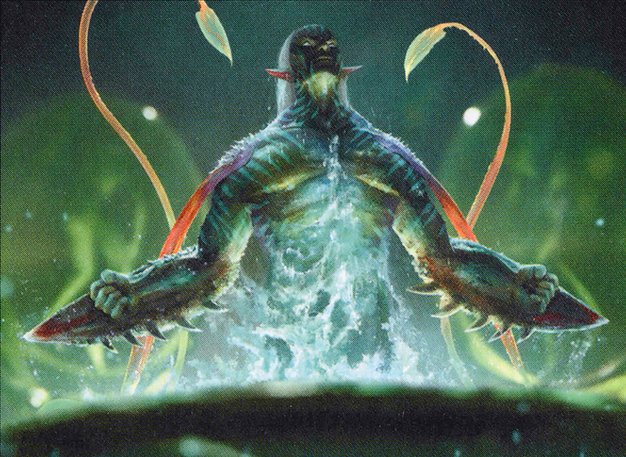
Neoform by Bram Sels
As a creature combo deck, I need a lot of ways to find my combos.
- Invasion of Ikoria
- Imperial Recruiter
- Trophy Mage
- Spellseeker
- Finale of Devastation
- Neoform
- Transmute Artifact
- Eldritch Evolution
- Chord of Calling
- Crop Rotation
I should almost certainly also play Worldly Tutor, even though I dislike topdeck tutors, but I don’t currently play it.
Another strength of the deck is that I think it gets to play a good mix of answers to permanents.
- Gilded Drake
- Colossal Skyturtle
- Lightning Bolt
- Cyclonic Rift
- Resculpt
- Snap
- Flame of Anor
- Force of Vigor
- Pithing Needle
- Moonsnare Prototype
- Boseiju, Who Endures
- Otawara, Soaring City
As with Subtlety, I like having a lot of interaction which uses the Channel mechanic to let me interact in spots my opponents don’t expect. Also, Flame of Anor is an absurd card if you always have a Wizard, and Thrasios is a Wizard.
The primary card I should likely have that I don’t have here is Haywire Mite. I expect to find room to fix this at some point–since I have a lot of creature tutors and Urza’s Saga, it adds a lot of utility to a bunch of my cards.
Of course, being this being Commander, I need a good number of general-purpose card advantage cards:
- Mystic Remora
- Rhystic Study
- Fable of the Mirror-Breaker
- The One Ring
- Faerie Mastermind
- Phyrexian Metamorph
- Biomancer’s Familiar
- Training Grounds
- Seedborn Muse
I already touched on Biomancer’s Familiar, Training Grounds, and Seedborn Muse as combos with Thrasios.
Mystic Remora, Rhystic Study, and The One Ring are a given.
Phyrexian Metamorph does a lot of things, but seems fine to list here since its primary goal is to copy The One Ring if someone else has it.
Fable of the Mirror-Breaker and Faerie Mastermind are generally good cards I want to try a bit more. Realistically, if I had to guess the optimal configuration of this deck would cut them for Worldly Tutor and Haywire Mite. Fable is nice since making treasures is great and the goblin usually isn’t worth answering. I have a lot of creatures with ETB abilities, so the back of Fable is really good, but it’s fairly slow and expensive. It contributes more to how threatening I appear than it does to how likely I win, and both of these cards increase my exposure to creature sweepers, which is already a little on the high side.
Okay, but I still haven’t actually said anything about winning the game. I make infinite mana and Thrasios draws my deck. Then what?
Easy mode is cast all of your creatures and Finale of Devastation for a lot, but you don’t always have access to an attack step.
Finishers
I guess this category is “Finishers” but also graveyard interaction. With Endurance you can use Colossal Skyturtle, Otawara, Snap, or Barrin, Master Wizard to pick it up and replay it to redraw any other cards you cast, allowing your to loop Lightning Bolt to kill the table.
I believe the rest of the deck is mana. Because of Rograkh, I have a relatively small number of actual mana creatures to minimize exposure to Orcish Bowmasters and other sweepers. Because Thrasios wants repeated mana, not a quick burst of mana, I don’t have cards like Lotus Petal, Mox Diamond, or Chrome Mox.
In addition to the Rograkh package listed above, I have:
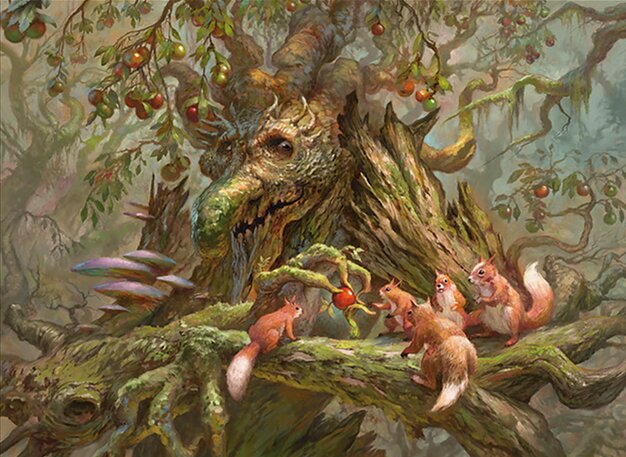
Generous Ent by Simon Dominic
I’m also playing 29 lands as well as Generous Ent and Lórien Revealed. I’m playing the land cyclers because they pitch to Force of Negation/Force of Will/Subtlety and Force of Vigor/Endurance and have a little upside as castable spells, though I expect that to come up rarely. If I add Worldly Tutor, Generous Ent also allows me to functionally Worldly Tutor for a land if I have to.
The most notable omission from the lands is Ancient Tomb. This could easily be wrong as it’s very good with Thrasios, but I’m also concerned about colored mana and I don’t realistically expect to gain life. Haywire Mite would mean that I could expect to gain a little, and I can theoretically gain life with Generous Ent, but I don’t expect that to happen much. I’m concerned that tapping Ancient Tomb every turn could encourage others to pressure my life total, which I’d rather avoid.
And that’s my deck. It plays a very basic kind of game, in that it doesn’t have a commander which fundamentally changes how your cards work like several of the stronger non-partner decks. This is more of a traditional cEDH blue midrange deck which will play fundamentally similar games to decks like Bruse/Thrasios or Tymna/Kraum.
Sam Black (any) is a former professional Magic player, longtime Magic writer, host of the Drafting Archetypes podcast, and Twitch streamer. Sam is also a Commander Cube enthusiast, and you can find Sam’s cube list here. For anything else, find Sam on Twitter: @SamuelHBlack.

